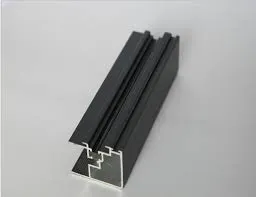wrought iron meaning
Understanding Wrought Iron Definition and Significance
Wrought iron is a term that carries a rich history and a significant presence in the world of materials used for construction, tools, and decorative elements. It is often recognized for its unique properties, versatility, and aesthetic appeal. But what exactly is wrought iron, and why is it so important?
Understanding Wrought Iron Definition and Significance
The production of wrought iron dates back to ancient civilizations, where it was prized for its ability to be shaped and formed without breaking. Its use can be traced back to around 300 B.C., and it became particularly prominent during the Iron Age in Europe. The artisans of that era appreciated its potential for creating tools and weapons that were both durable and easy to repair. Unlike cast iron, which is brittle, wrought iron can withstand impacts, making it suitable for various applications.
wrought iron meaning

In terms of composition, wrought iron contains a very low carbon content (typically less than 0.08%), which contributes to its malleability. It often contains slag inclusions, which further enhance its workability. The combination of these features makes wrought iron an ideal choice for forging and welding.
Wrought iron has been used in a myriad of applications, with one of the most notable being in the creation of ornamental gates, railings, and balconies. The craftsmanship involved in shaping wrought iron into intricate designs showcases the skill of blacksmiths throughout history. Additionally, it has been widely utilized in structural components, such as beams and columns, in buildings and bridges, particularly during the 18th and 19th centuries.
In the modern age, wrought iron continues to hold value, though its production methods have evolved. While it is not as commonly produced as it once was, wrought iron is still sought after for its aesthetic qualities and historical significance. Many architects and designers favor the material for restoration projects, where authentic historical preservation is paramount. Furthermore, the allure of wrought iron is also evident in contemporary décor, with products ranging from furniture to light fixtures that feature this timeless material.
In conclusion, wrought iron is more than just a building material; it is a reflection of human ingenuity and craftsmanship throughout the ages. Its defining characteristics—strength, malleability, and beauty—have secured its place in both historical and modern contexts. As we appreciate wrought iron's role in our architectural heritage, we also acknowledge the artisans who have perfected the art of working with this unique material. Understanding wrought iron is crucial not only for its practical applications but also for recognizing its cultural importance in the tapestry of human innovation.
-
Wrought Iron Components: Timeless Elegance and Structural StrengthNewsJul.28,2025
-
Window Hardware Essentials: Rollers, Handles, and Locking SolutionsNewsJul.28,2025
-
Small Agricultural Processing Machines: Corn Threshers, Cassava Chippers, Grain Peelers & Chaff CuttersNewsJul.28,2025
-
Sliding Rollers: Smooth, Silent, and Built to LastNewsJul.28,2025
-
Cast Iron Stoves: Timeless Heating with Modern EfficiencyNewsJul.28,2025
-
Cast Iron Pipe and Fitting: Durable, Fire-Resistant Solutions for Plumbing and DrainageNewsJul.28,2025
-
 Wrought Iron Components: Timeless Elegance and Structural StrengthJul-28-2025Wrought Iron Components: Timeless Elegance and Structural Strength
Wrought Iron Components: Timeless Elegance and Structural StrengthJul-28-2025Wrought Iron Components: Timeless Elegance and Structural Strength -
 Window Hardware Essentials: Rollers, Handles, and Locking SolutionsJul-28-2025Window Hardware Essentials: Rollers, Handles, and Locking Solutions
Window Hardware Essentials: Rollers, Handles, and Locking SolutionsJul-28-2025Window Hardware Essentials: Rollers, Handles, and Locking Solutions -
 Small Agricultural Processing Machines: Corn Threshers, Cassava Chippers, Grain Peelers & Chaff CuttersJul-28-2025Small Agricultural Processing Machines: Corn Threshers, Cassava Chippers, Grain Peelers & Chaff Cutters
Small Agricultural Processing Machines: Corn Threshers, Cassava Chippers, Grain Peelers & Chaff CuttersJul-28-2025Small Agricultural Processing Machines: Corn Threshers, Cassava Chippers, Grain Peelers & Chaff Cutters












